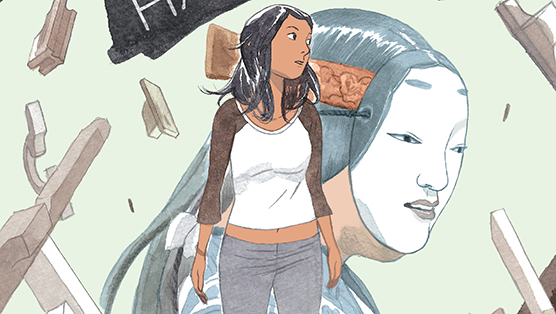I picked up Fumio Obata’s Just So Happens because the protagonist shares some superficial similarities with my partner – Japanese, lives in London, brother and parents back in Tokyo. Even the name (Yumiko) is almost the same. But reading it, I found that Yumiko’s experience is typical of a lot of Londoners, including my own. The book is partly about how you come to terms with leaving behind your roots in one place, and becoming comfortable in another.
It’s a bit better than that, actually. Yumiko has to deal with the contrasting expectations of her parents. Before his death, her father applied pressure on Yumiko to return to Japan to get married. He even had a potential husband in mind. He is not a straightforward villain – Obata portrays him as a kindly old man who is comfortable in his skin and has fixed ideas about what his daughter should be doing. But the role he has mapped out for her is something Yumiko wishes to escape.

Role-playing is a central motif in the book. Yumiko associates the rigid rituals of the father’s funeral with the stilted performance of Noh theatre. She is haunted by visions of a Noh actor, who comes to symbolise the way human beings are masked and trapped by ossified Japanese social conventions. As Yumiko learns, in Noh theatre, “self becomes an obstacle”.
But when Yumiko abjures this vision and knocks the ghost down to the ground, the entire theatre collapses around her. This is just as distressing. Abandoning the culture in which you grew up can leave you groping in the dark.
And it turns out that you can’t escape the structures that surround you. The ghost appears again when Yumiko is discussing her relatively free life in London with her mother, who also rejected her destiny as a “dependent housewife”, got a divorce and became an academic. Her mother approves of Yumiko’s decision to stay in London and marry a “Western man”, because he will be supportive of her own ambitions. But whose ambitions are they really? Yumiko discovers that while running away from her father’s ideal of what to do with her life, she has run straight into what her mother’s wants and expects of her. She is living her mother’s dream – the role her mother has designed for her.

One of the cool things about Obata’s drawing in the book is the way he uses white space to suggest how light falls on different objects in a panel. This gives everything a slightly provisional look, as if the scene is in the process of being filled in. Faces in particular are often outlined in white – Yumiko is often only half coloured in. However, as Yumiko settles into her identity and discerns the various roles she has been playing, the colours fills out to the edge of her face, and she looks more complete.
The same effect is also used to introduce London – the first establishing shot looks almost cubist, with half-completed shapes intruding onto the foreground of a busy street scene. The book ends on a drawing of London as well, but here the depiction is more settled – white space mainly used to show an open sky. It may reflect Yumiko’s own feelings about the city is becoming increasingly coherent and welcoming for her. But it also underlines the way London is always going to be a liminal place for people – we’re always in the process of colouring it in.
